After decades of deliberation and communal tensions, the Supreme Court of India has finally announced its verdict on the disputed land case in Ayodhya.
According to the judgment, the disputed land is to be given to Ram Janmabhoomi Nyaas and a suitable plot of 5 acres will be given to the Sunni Waqf Board in Ayodhya, for the construction of the mosque.
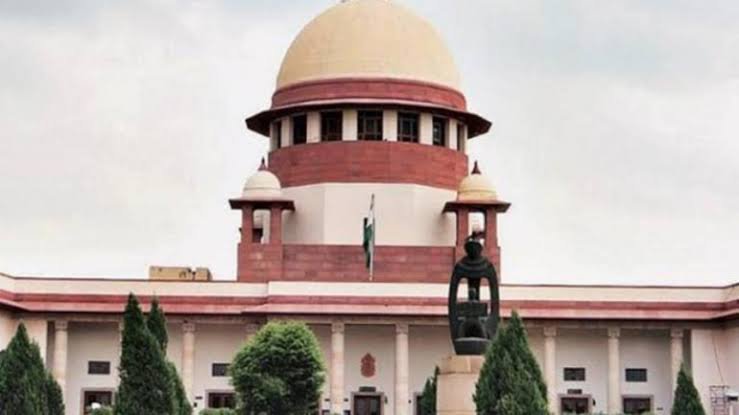
While Indian media has been extensively covering this verdict, foreign press has also shown a keen interest in this decades-old case.
Assessing the situation on the ground, the BBC reported:
Despite warnings by authorities not to celebrate the verdict, BBC correspondents in court say they heard chants of ‘Jai Shree Ram’ outside as the judgement was pronounced. ‘It’s a very balanced judgement and it is a victory for people of India’, a lawyer for one of the Hindu parties told reporters soon after. However, a representative for the Muslim litigants said that they were not satisfied and would decide whether to ask for a review after they had read the whole judgement. Outside the court, the situation has been largely calm.
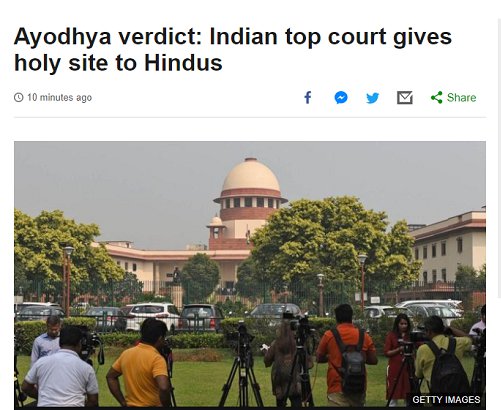
Another prominent news outlet, The Washington Post said:
Five Supreme Court justices said in a unanimous judgment that 5 acres (2.02 hectares) of land will be allotted to the Muslim community at a prominent place for building a mosque. The disputed land will be given to a board of trustees for the construction of a temple for Hindu god Ram.
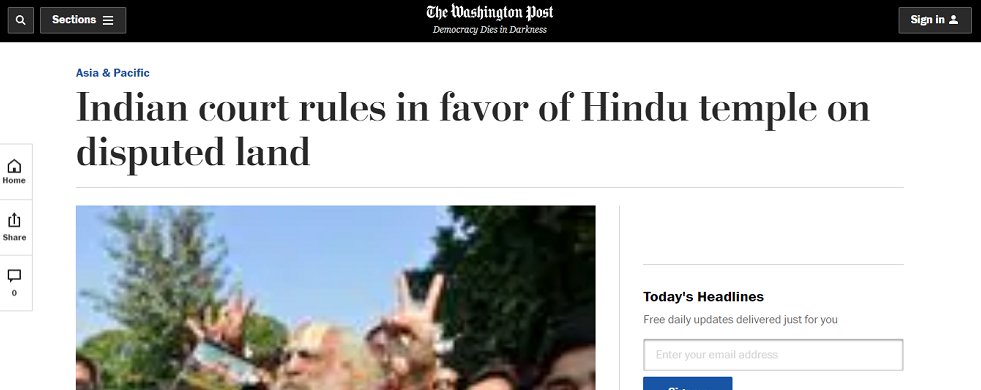
The Guardian was also top of the verdict and wrote:
The Indian supreme court has ruled that India’s most hotly disputed piece of land rightfully belongs to Hindus, with judges granting permission for a temple to be built on the site in Ayodhya. In their unanimous and historic judgement, the five supreme court judges stated that the site rightfully belonged to Hindus, based upon the claim it is the birthplace of their god Ram. In their statement the judges ruled a mosque that had stood on the site since the 16th century, and was the basis of the Muslim claim to Ayodhya, was “not built on vacant land” and had displaced a previous temple.

And here’s what the New York Times had to say about the verdict:
India’s Supreme Court on Saturday ruled in favor of Hindus over a piece of land Muslims also claim, greenlighting the construction of a temple on the site where a mosque stood before it was demolished by a frenzied mob three decades ago, an event that has set the tone for the country’s sectarian tensions since. In the lead up to the decision, right-wing Hindus said the ruling would cement their status as leaders of India after centuries of rule by first the Muslim Moghul Empire and then British colonialists. But Muslims fear that the decision will relegate them to second class citizens and could potentially empower Hindu extremists.
ADVERTISEMENT
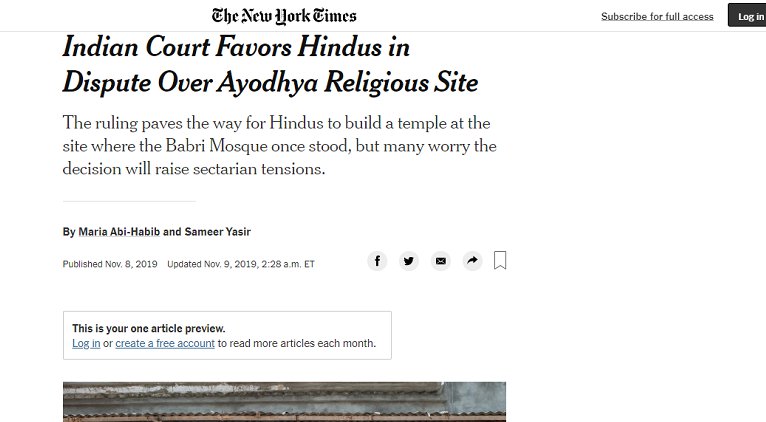
CNN also had quite a bit to say about the Supreme Court’s decision.
Less than three acres of disputed land at a holy site in India will be handed over to a Hindu group for construction, India’s Supreme Court unanimously ruled Saturday. The 2.77 acres, previously claimed by both Hindus and Muslims, was the site of a 16th-century mosque demolished by right-wing mobs in 1992 in Ayodhya, a town in the state of Uttar Pradesh. But India’s top court ruled Saturday that a Hindu temple to the god Ram could be constructed at the site, while giving Muslim representatives a separate 5 acres of land in the town.
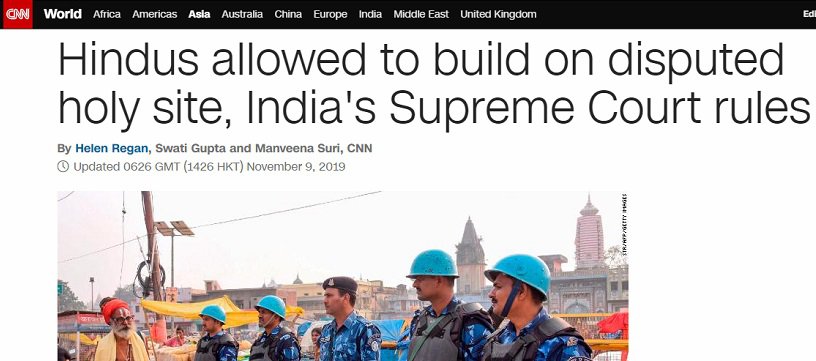
Al Jazeera, in its coverage of the Ayodhya verdict by the Supreme Court of India said:
India’s Supreme Court has awarded Hindus control of a disputed religious site in the town of Ayodhya for the construction of a temple, in a landmark verdict announced amid heightened security across the country. Muslims will be given five acres of land at an alternative site in Ayodhya, in northern Uttar Pradesh state, the top court ruled on Saturday.
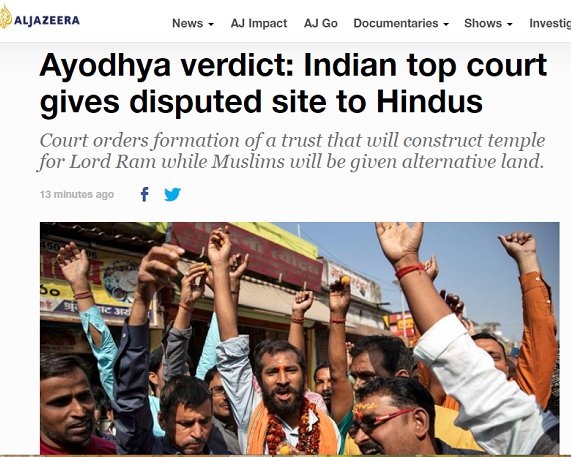
And this is how Gulf News covered the verdict.
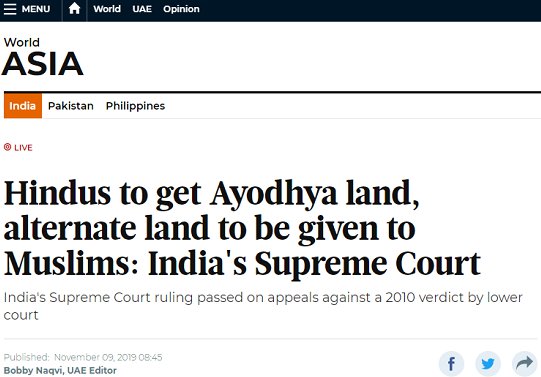
The SC has directed that a trust should be established for the construction of the temple within the next 3 months.

















